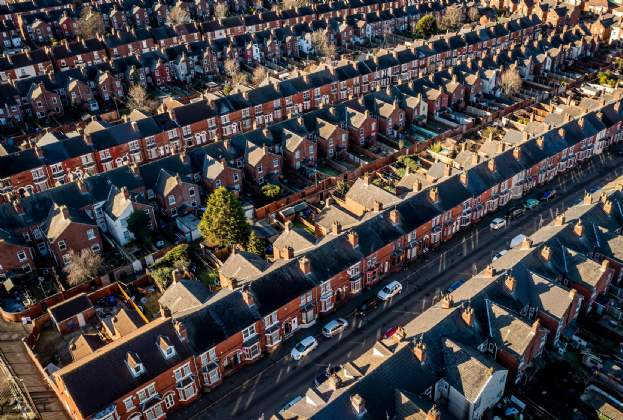Homes under the Hammer (or HUTH as it’s known) is probably one of the most popular and enduring BBC daytime TV series. It first aired on 17 November 2003 and has recently celebrated its 20th birthday.
Now in its 26th series, the show has screened over 1,000 episodes with around 1.5 million viewers on average tuning in to each one. It has to be testament to the British public’s obsession with property. But it has also reportedly attracted self-confessed celebrity interest – apparently Dave Gorman, Mark Wahlberg and Meryl Streep are long-term fans.
The format is simple. Three properties – in varying states of disrepair – are featured. Usually they are single houses or flats, but occasionally there’s a development site or a quirky project like a disused church or a redundant pub.
Presenter Martin Roberts or colleagues, including former footballer Dion Dublin, Lucy Alexander and builder Tommy Walsh, give us a tour of the challenges each lot presents. The scarier the better, from structural cracks you can put your hand in or dry rot that would outperform a mushroom farm to the ubiquitous avocado bathroom suite or swirly patterned carpets. Each property is then filmed being sold at auction – making many of us auctioneers Z list ‘celebrities’ (I’m not holding my breath for an invitation to appear on Strictly but I did get recognised in the theatre once).
Buyers are interviewed and local agents are brought in to give their opinion on the selling price and rental value of the newly modernised homes which are often barely recognisable from their pre-auction state.
Aside from being addictive daytime entertainment, Homes under the Hammer has done more for the promotion of property auctions than any property auctioneer could have hoped for. In the 20 years that the show has been airing and repeating, awareness of this super-efficient method of buying and selling has been dramatically raised. The auction room has been demystified and the demand for catalogues presenting potential money-making opportunities has soared.
But curiously, the level of house transactions at auction hasn’t really changed over this period. In fact, it’s remained pretty static. Around 18,000 to 20,000 residential properties sell by auction each year. This accounts for about 2.2 per cent of total home sales – not much different to 2003. This is due to the UK system of chain selling. Buying and selling simultaneously is difficult to achieve at auction. You can hope to do one or the other but, without a second home, you would need bridging finance or interim rented accommodation. So while HUTH has improved demand, it hasn’t changed our longstanding status quo.
As the show enters its 21st year, it shows no sign of waning. Not even Covid could derail it. As auctioneers moved to online and livestream sales, the tireless producers have followed. Although pre-Covid footage of live auction rooms is still screened, as time goes on, we hear the narrator say more frequently that the property was sold at an online auction. There’s no auctioneer to film which means this Z list ‘celebrity’ auctioneer’s star may be fading, alas. But times change and, for all the nostalgia of the ballroom, online sales are no less exciting, dramatic and, ultimately, worthwhile.
Further information
Contact Gary Murphy
.jpg)
.jpg)
.jpg)
.jpg)
.jpg)

.jpg)
.jpg)
.jpg)
.jpg)
.jpg)